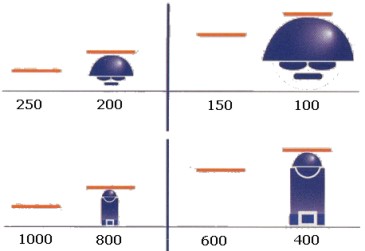As always, my caveat, if this has been asked before, please excuse the repetitiveness, if someone would rather just post a link to the old discussion I would be more than happy to click it. But, I have googled and found some unclear data on this. When someone explains something and it doesn't make sense they either don't know what they are talking about, aren't explaining it well, accepted a fallacy within their own understanding, or are going above my own understanding.
So, is there someone on here, who can explain the benefits, purpose, and methods by which to use the famous MSR reticle I I will be using in my new Steiner 5-25 Military.
Caveat #2 - I understand the principle of milling, taking objects of average known size and relating them to relative distances within the reticle. Going from that understanding, can someone fill me in on where to go from there, in order to effectively utilize the benefits of the MSR reticle over traditional Mil dot reticle?
Much appreciation in advance.
So, is there someone on here, who can explain the benefits, purpose, and methods by which to use the famous MSR reticle I I will be using in my new Steiner 5-25 Military.
Caveat #2 - I understand the principle of milling, taking objects of average known size and relating them to relative distances within the reticle. Going from that understanding, can someone fill me in on where to go from there, in order to effectively utilize the benefits of the MSR reticle over traditional Mil dot reticle?
Much appreciation in advance.


